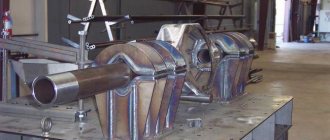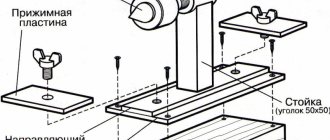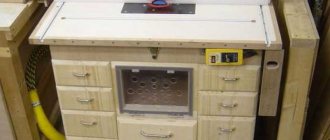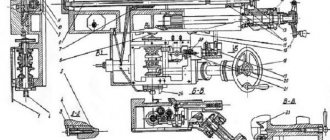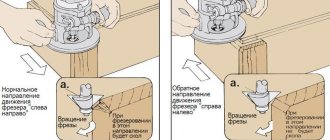- Round rotary table with manual and mechanized drives. 7204-0023-01 (400 mm).
- Round milling rotary table 61P-17-000 (250 mm).
- Round horizontal table - vertical RKV 7205-4003 (250 mm).
- Horizontal rotary tables TS (160-1250 mm).
- Horizontal rotary tables TS (1600-2500 mm).
- Rotary tables horizontal-vertical TSL (100 - 800 mm).
- Horizontal-vertical rotary tables T13 500B (Ø500 mm).
- Rotary tilting tables TSK (160 - 400 mm).
- Horizontal-vertical rotary table TK13EL, CNC, with a through hole in the spindle.
- Components and equipment for rotary tables.
Scope of application and benefits
In addition to milling equipment, the rotary table is installed on drilling, boring and other machines, the table of which, together with the part, moves only in a horizontal or vertical plane relative to the spindle with the cutting tool.
The rotary table allows you to process workpieces on a milling machine along the contour, creating a complex configuration, spiral grooves, grooves and holes. Depending on the type of rotary table, the machine can cut grooves into the part at any angle to the base surface, drill and bore holes without reinstalling the part with an accuracy of tenths or even hundredths of a degree.
Using a rotary table on a milling machine offers the following advantages:
- milling of the top and side surfaces;
- creating polyhedra from one installation;
- drilling around the perimeter and at an angle to the table surface;
- Boring on all surfaces is straight and at any angle;
- creating spiral grooves on the surface of the part;
- cutting grooves of any configuration.
The rotary table allows you to process complex parts on a milling machine from one installation.
Important!
When the table rotates automatically, rotating bodies, such as rings and cylinders, are made by milling - high-performance roughing.
DIVIDER DISCS DP for tables TS, TSL, TSK.
| The set of dividing accessories includes: dividing disks, a handle with a lock, bolts, washers and sectors. There are two dividing disks - A and B. The number of dividing parts and applicability are indicated in the table. This kit allows the operator to accurately divide 360° of the workpiece surface into any number of parts from 2 to 66, and into any multiple of 2, 3 and 5 parts from 67 to 132, without residue, accurately and quickly. |
Applicability of disks:
| Applicability | Discs | Price, rub. | |
| DP0 | TSL100 | 5 100 | |
| DP1 | TS160A, TS200A, TS250A, TS320A TSL160, TSL200, TSL250, TSL320 TSK250, TSK320 | A: 34, 37, 38, 39, 41, 43, 44, 50, 52, 56, 61 B: 46, 47, 49, 51, 53, 54, 57, 58, 59, 62, 64 | 7 800 |
| DP2 | TS400A TSL400 TSK400 | A: 34, 37, 38, 39, 41, 43, 44, 50, 52, 56, 61 B: 46, 47, 49, 51, 53, 54, 57, 58, 59, 62, 64 | 9 800 |
| DP3 | TS500A, TS630A, TS800A, TS1000A T13500B | A: 33, 34, 37, 38, 39, 41, 43, 44, 50, 52, 56, 61 B: 46, 47, 49, 51, 53, 54, 57, 58, 59, 62, 63, 64 | 14 800 |
Classification
Rotary tables are classified according to different parameters:
- the location of the grooves is radial and parallel;
- number of rotation axes: one or two perpendicular;
- dimensions - standardized sizes;
- faceplate rotation drive is manual and automatic.
For mass production, devices with expanded functionality are used, combined with a dividing head, and complex designs for CNC machines.
Round
The simplest design of a rotary table. The workpiece rotates around an axis located vertically.
The device allows you to process side surfaces, create polyhedra, chamfer and make grooves and boring.
Reference! The simplest design of a rotary table. You can do it yourself at home.
Vertical-tilt
The table rotates around its axis and tilts 45⁰ in a perpendicular plane. Used for milling complex reliefs, drilling and boring holes at an angle to the base. The device provides high accuracy of the spatial location of holes.
Used on milling and drilling machines.
Vertical-tilt with rotating disks
The rotary disks included in the turntable set are used as a dividing head. Usually there are 3 of them. with different hole ratios. They mechanically rotate the workpiece to a certain angle in accordance with the number of teeth. The use of devices allows you to cut gears and gears with straight and oblique teeth.
Horizontal
The surface of the faceplate is located in the plane of the Z axis. The device allows for circular milling, processing of ledges, grooves, and boring.
With vacuum grip (for CNC units)
On CNC machines, pneumatics are used to quickly fix and center the part. The fastening is tightened by vacuum when air is pumped out. The compressor turns on automatically according to the program. If necessary, the workpiece quickly changes its position, being clamped into the spindle chuck and vice versa.
Important!
Pneumatics are also used to fasten workpieces made of thin sheets, aluminum, and non-ferrous soft alloys, which are deformed when the bolts are tightened.
Design
To perform the above functions, the manual rotary table of a metal-cutting machine must consist of:
- Massive prismatic body.
- A movement mechanism (usually a worm gear, the design of which ensures precise installation of the workpiece relative to the milling head of the machine).
- Faceplates are parts with T-shaped slots and a device for precise installation of the workpiece.
Depending on the technological purpose, these units can be equipped with other devices.
The rotary table for CNC metal-cutting machines is additionally equipped with synchronous electric motors (sometimes stepper), which makes it possible to process all movements in accordance with incoming control commands. The most common are such designs for performing synchronous rotation of the machine table with subsequent movement along one or more coordinates.
Accurate execution of control commands, with minimal power losses of the synchronous drive, is possible when the necessary movements are performed using radial-axial bearings. They are insensitive to bending moments and shear forces that arise during the processing of massive parts.
It should be noted that the domestic machine tool industry produces a range of devices in question in different sizes, but with imported drives (Japanese or German).
Inclined units have a similar structure, but are additionally equipped with devices for manual or automatic rotation of the faceplate to a fixed or floating angle (in the latter case, the machine must be equipped with a CNC system).
Tools that expand the capabilities of metalworking equipment
The milling machine work table moves linearly in 2 or 3 directions. The rotary table rotates the workpiece, turning it towards the spindle with the cutting tool, different faces and tilting it at an angle. This allows you to perform several operations from one installation, and more accurately maintain center-to-center dimensions and the distance from protrusions and grooves.
Sinus
The sine table is highly accurate. Rotates with an accuracy of one second. Helical gears and spiral grooves are installed due to the synchronous rotation of the faceplate and its tilt at an angle. For manual control there is coarse and fine adjustment, 2 dials for each movement.
For drilling machine
Overhead rotary tables are installed on the drilling machine table with a radial arrangement of holes. Uniform rotation of the part allows the drill to make holes at an equal distance from the center of rotation, eliminating constant rearrangements. A table with an inclination of up to 45 degrees is designed for drilling at an angle to the surface of the part.
Round, magnetic
Magnetic electric coils are excited when current is applied to them, several times faster than conventional mechanical fastening. The part lying on the working surface is instantly attracted or released. The machine operator does not have to turn the screws or wait for them to be mechanically tightened. This prevents overtightening of the bolts.
The advantages of a magnetic table are the quick fixation of parts without dents or deformations. The disadvantage of installing in a limited number of materials is that only carbon and alloy steels are magnetized.
Reference! Non-ferrous alloys, stainless steel, aluminum and copper cannot be fixed on a magnetic table.
Rotary table cost
Stores offer a wide range of rotary tables for milling machines. The table shows approximate prices for some typical rotary tables that have not been used.
| Construction type | Approximate price, rub. |
| Round milling | 40 000 |
| Sinus | 48 000 |
| Rotary round (manual or mechanized drive) | 80 000 |
| Vertical with mechanized drive | 75 000 |
| Horizontal-vertical (Poland) | 113 000 |
| With mechanical reference system (Russia) | 200 000 |
| Globusny | 313 000 |
The cost of a rotary table depends on its type, design, the presence of additional elements, the need for commissioning work and the manufacturer.
Certified models
The presence of a certificate indicates that the product meets all standards and safety requirements. Only after checking the list of characteristics, a quality certificate is issued. Such models include the following.
PROMA OS-250 250001
Used for milling, drilling, threading.
Characteristics:
- installed vertically and horizontally;
- rotation angle 360⁰;
- T-slots 6 pcs.
Installed on small milling machines for the production of single parts and small batches.
Homge HUT-300 universal
Tilt angle 90 degrees. Installation of the workpiece is simplified due to the presence of 2 locking bolts.
TSK 200 tilting rotary table
Used for circular milling, boring, creating corners and complex configurations.
Characteristics:
- rotary table with an inclination of up to 45⁰;
- mechanical control;
- high processing accuracy.
In addition to these devices, Vertex, Encore Corvette, Purelogic R&D products and many others are certified.
FLANGES FOR MOUNTING LATHE CHUCKS FL on rotary tables TS, TSL, TSK.
| FL adapter flanges are designed for fixing lathe chucks on rotary tables TS, TSL, TSK. |
Correspondence of the diameter of lathe chucks to flanges:
| Flange | FL100 | FL160 | FL200 | FL250 | FL320 | FL400 | FL500 |
| Faceplate diameter, mm | 100 | 160 | 200 | 250 | 320 | 400 | 500 |
| DK or PS cartridges | DK11-80 PS3-80 | DK11-125 PS3-125 | DK11-160 PS3-160 | DK11-200 PS3-200 | DK11-250 PS3-250 | DK11-315 PS3-315 | DK11-400 PS3-400 |
| Chuck diameter, mm | 80 | 125 | 160 | 200 | 250 | 315 | 400 |
| Price, rub. | 2 900 | 3 900 | 4 500 | 6 900 | 10 900 | 12 200 | 15 500 |
Homemade tilt-rotary machine for metal and wood machines
In a home workshop where there is a milling machine, it is good to have a rotary table among the devices. They are sold in stores if you need to make a lot of parts. Hobbyists can make the device themselves.
Required tools and materials
The easiest way to make a device yourself is from a lathe chuck. To do this you will need the following tools:
- screwdriver;
- Bulgarian;
- hex and socket wrenches;
- welding machine.
The rotary table consists of parts:
- scroll chuck;
- base with 2 ears;
- limb from the drawing board;
- clamps;
- bolts;
- 2 disks.
Ears with holes for bolts are welded to the base for fastening to the working surface of the machine. The limb is installed between 2 washers above the base. An inspection window is cut out in the body of the cartridge to see the divisions. The part is clamped into the jaws and rotated manually.
Drawings and calculations: When making a device yourself from scrap materials, a calculation is made of the stroke of the worm shaft and the number of teeth on the disk through its radius. Then a tap with the required pitch for cutting the disk is selected.
Step-by-step instruction
The disk is fixed on the workbench and put on the axle. Fasteners are installed. A screw is screwed in near the edge, against which the tap inserted into the electric drill rests. On its side it rests against the surface of the disk. When rotated, it cuts the tooth. The worm is installed in the housing in engagement with the cut teeth on the disk. A dial with a handle is attached to its end. Everything is attached to the base.
Safety precautions
When making a device, it is necessary to check the condition of the tool and the wires of the electric drill and welding machine, the grounding of the equipment and sockets. Even in a home workshop, you should wear overalls with long sleeves and safety glasses. The workplace must be cleared of unnecessary objects and well lit.
A rotary table for a milling machine increases the functionality of the equipment and allows you to make more complex parts with less time. For home use, you can make the device yourself.


